8 Key GOALS you'll need to achieve for financial freedom
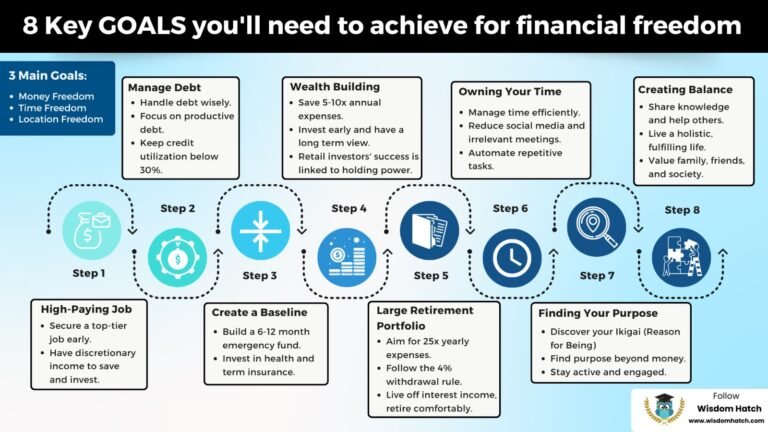
All of us have these priorities always in mind:
- Not having to stress about money
- Having free time to spend with your friends and family
- Freedom for passion projects, traveling the world etc.
To achieve these goals, we are focusing on 3 main aspects:
- Money Freedom
- Time Freedom
- Location Freedom
We all understand that focusing and having control of these aspects would make our life that much more enjoyable. But we struggle to subdivide these goals into a series of more attainable and achievable steps.
Doing this makes your chance to complete these goals easier and doable.
Why should you trust my words?
- I graduated from INSEAD in 2015, which is one of the top MBA programs in the world.
- I further completed a few years in the corporate world with top tier consulting firms and then proceeded to quit my job to then create a series of profitable digital start ups.
- At 35, I am semi-retired. And, live in South Goa with my family.
- I work only for 3-4 hours a day, and spend a lot of time with my family. I also get to pick the type of projects I wish to work on given my money, time and location freedom.

This blog will try to highlight 8 Key goals that you will need to achieve financial freedom:
Step 1: Have a good high paying job.
This point applies to the majority of the working youth in India. (If you have family wealth, run established businesses, or running start ups, then this does not apply to you)
Having a good job early on in your career gives you:
- Confidence
- Discretionary Income: You have left over money after taking care of your expenses.
Discretionary Income helps you save more, invest more, and build upon your skills and knowledge (by taking courses or getting real experiences).
However, this is not an easy task for the majority of youth in India.
The youth unemployment rate has gone up significantly over the past 20 years, currently sitting at almost 24% [1].
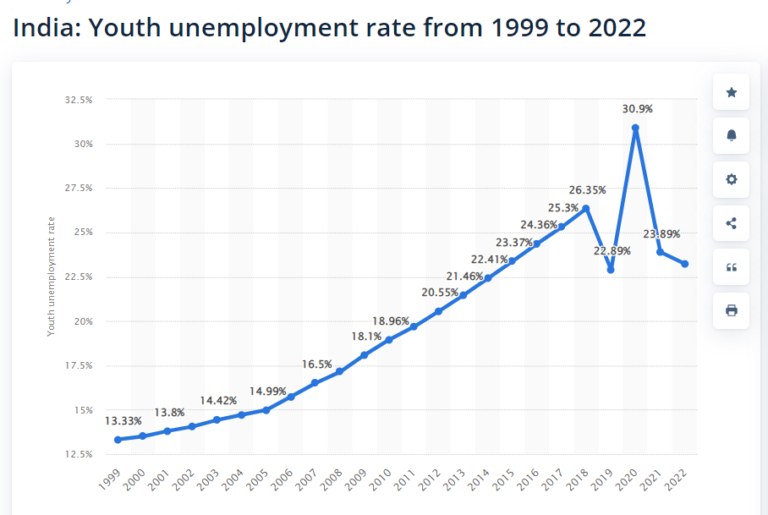
Now,as per the article below, if you are INR 25k per month (3 Lakhs per year) you come under India’s Top 10% income earners [2].

This news is more shocking when contextualized with the fact that the average cost of living in India for a single person is around INR 28k and for a family of 4 it’s almost INR 96k [3].
Yes, this number does not consider exactly which city you are living in, but to be in the top 5-10% earners you will most likely need to be in one of the metropolitan cities, and the cost of living in these areas will be somewhat similar if not more.
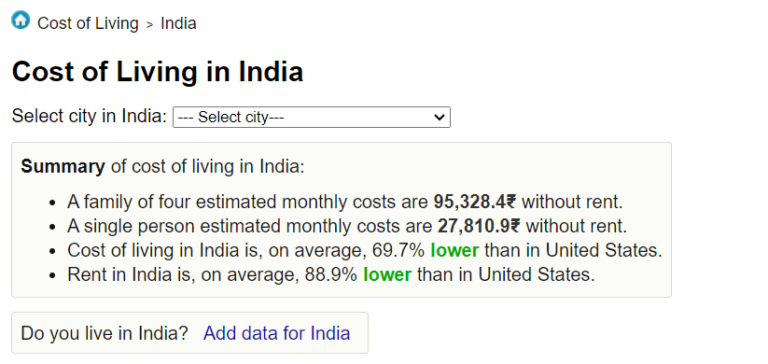
Gold and Silver standard jobs are higher tier companies (Tier 1 and Tier 2 respectively) who pay well and have good opportunities.
Unfortunately in countries like India and China, where the population is very high and competitive, there is a mismatch in the supply and demand of well paid jobs.
The number of high quality jobs are not large enough to keep up with the demand in the country [4] .

So, what can you as a young individual do:
- Look for gold or silver standard jobs. Upskill to match the requirements.
- Go abroad for better opportunities. More opportunities but shifting could be expensive and painful.
- Aim for industries that pay well (Tech, Finance, Consulting etc.) [5]
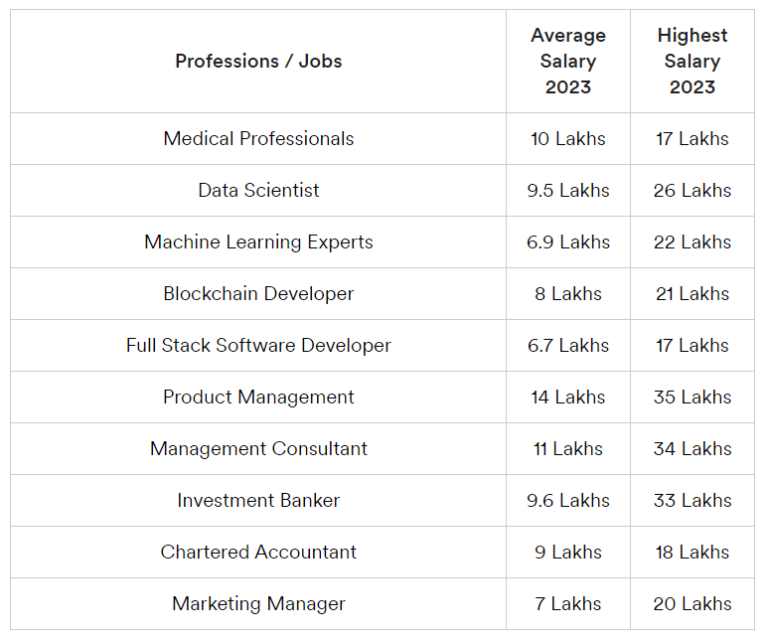
Step 2: Manage your Debt.
Taking debt has become a popular opinion for the young working class. It has become hassle-free and more of a fashion than a need-based system.
Taking a loan, be it personal loans, car loans, home loans etc., have become extremely easy.
Taking credit just because it’s easily attainable and it meets your short term goals is not a good choice. They will have severe repercussions on you in the long term.
The Household Debt (in % of GDP) has been growing significantly over the last decades [6].
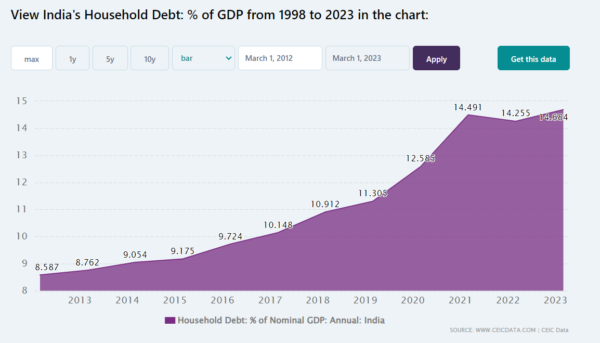
Unproductive debt which could lead to defaulting or over utilization of your credit limit, will cause your CIBIL score to take a massive hit.
Now, later on in life when you have to start taking productive debt (education loans, home loans etc.), your EMIs will go up exponentially due to your bad credit score.
Avoid taking debt when it’s not required.
As a rule of thumb:
- Only take productive debt (education, home etc.)
- Keep your credit utilization less than 30% of your total limit and your total income.
- Only take loans that meet this criteria
Step 3: Create a Baseline.
This is a method for you to protect your downside. If you have sudden needs or unforeseen circumstances, you should not be hit to a level that you can’t get back up.
One easy way to do this is to create an Emergency Fund.
- Create a pot of at least 6 months, or if possible 12 months of your monthly expense as your emergency fund.
- Create an FD out of this. This is not an investment, it’s just to protect you.
- This helps create a buffer during the unforeseen situation.
The second way is to have health insurance as well as term insurance.
To deal with an uncertain circumstance like COVID, having health and term insurance is extremely important.
As per a study from Forbes [7], just 37% in India are covered under a health insurance scheme as of 2021.

Keep in mind:
- The earlier you buy health or term insurance, the lower your premiums will be.
- If you are taking health insurance for your family, remember that it is based on the eldest member of the family. So, don’t mix the insurance with your parents and your family.
Step 4: Wealth Building.
Once you have the above 3 steps figured out, your new goal is to save 5-10x of your yearly expense.
For eg: if your monthly expense is 1 Lakh (i.e. yearly expense is 12 Lakhs). So, your goal is to save at least (12×5) 60 Lakhs.
This lets you take sensible risks in your life, without having a lot of downside. This will help you create more opportunities in terms of building investment incomes.
Start investing early in life and take some time out to learn about how you can manage your finances and budget your life well.
If you want to start investing or are looking to learn more about investing concepts, join my Youtube Community where I give broad topics and stock specific commentary on the Stock Market.
One of the primary reasons why retail investors don’t make good money in the stock market is because they don’t have the holding power to stay invested. But if you have a holding period of at least 5 years, then the chances of you generating more wealth in the stock market goes up exponentially.
This was highlighted by a Dalbar Case study on stock market returns if you had a longer holding period [8].


You also have the independence to quit your job, take a career break or experiment with your business etc., once you build this safety net.
Step 5: Build a Large Retirement Portfolio
Your next key milestone is to save at least 25x your yearly expense. With the same above example of 1 Lakh monthly expense, this goal amount comes to around 3 crores.
How did we get to this 25x number?
This is because, a popular notion to retire early is by being able to live on your interest income from your portfolio, and this 25x number helps you achieve the same.
How can you do this?
By using the 4% withdrawal rule. Let’s say you have 3 crores as your saved up amount. And let’s assume that since you have invested your portfolio sensibly, you grow this at 10% CAGR (which is not hard). Now, let’s also assume inflation in the economy to be around 6%, we are left with 4% growth every year [9].
Now this simply means that, if you withdraw 4% every year from your portfolio which is 12 Lakhs (your yearly expense), your initial nest of 3 crores remains intact (inflation-adjusted).
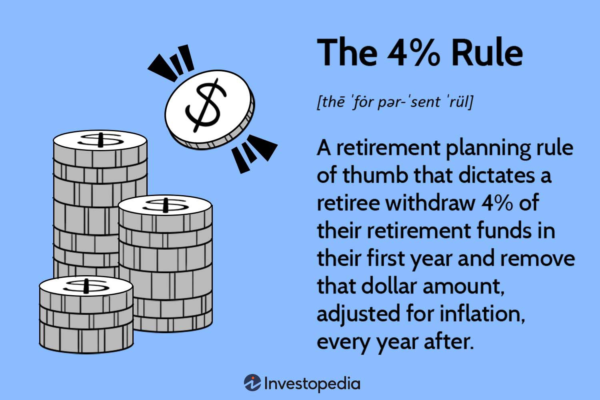
So, at this stage you are at a position where you can live off your interest income and money-wise you are sorted and retired.
A keep point to note is that this will only work if you avoid lifestyle inflation.
Lifestyle Inflation is the process of increasing your monthly expenses to improve your lifestyle.
Step 6: Owning your time.
Time is one of the most critical commodities that we have, which is also limited.
As per the study below [10], we can note these key points of who people spend their time with throughout their life:
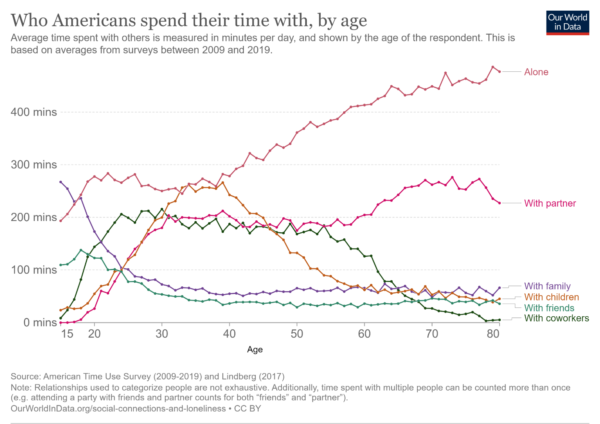
- As you age, you spend more time alone.
- You spend most of your time with your family in the early years of your life. This keeps going down with age.
- Similarly with your children, you spend a lot more time in the early years of your life and then this also comes down significantly.
- The same happens with friends and colleagues.
This shows that time is an important but limited commodity and that we need to use it well throughout our life.
Most people who are successful in their career in terms of money, power and fame will all have the same regret that they couldn’t spend enough time with their family.
This happens primarily because we as humans have a tendency to overestimate the viewpoint that we have infinite time.
Keep these points in mind:
- Save your time, and also save other people’s time.
- Avoid too much scrolling and social media.
- Start saying no more often, cut short on irrelevant meetings.
- Pick and choose what you consume.
- Be more conscious about where your time is being spent.
- Automate repetitive work.
Step 7: Finding your Purpose.
At this point you have money control, and have a good control of your time.
But it’s still extremely important to stay engaged and not lose focus.
You can do this by finding your purpose in life.
This has been beautifully covered by the Japanese concept of Ikigai, which means ‘ A reason for being’ [11].
This involves finding a balance in your life, and a purpose in your life and work without having money as a driving factor.
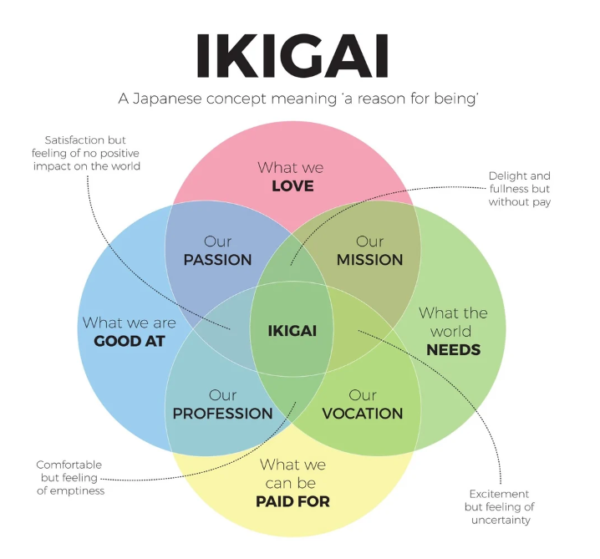
So the key question you can ask yourself is without money being a factor, what kind of work drives you.
This could be learning, teaching, gardening, traveling and learning about new cultures, helping charities, running a passion project etc.
As good as it sounds to just be sitting on a beach, this will get monotonous. So you will need something that will keep you active and occupied.
Step 8: Creating Balance.
You might have a lot of free time, money and location freedom at this point. But the situation might be that your family, friends etc. dont have the same freedom that you do.
So, as someone who has achieved all of this, always take the opportunity to provide value to others, share your learnings, and help them and be a good friend and citizen.
Create and maintain a balance in your daily life that makes use of all your learnings and resources to live a happy, holistic and complete life.

Conclusion
In conclusion, achieving financial freedom is a journey that involves careful planning, disciplined actions, and a strong commitment to your goals. The eight key goals outlined in this blog post provide a comprehensive roadmap to attaining financial freedom, allowing you to enjoy a life of reduced financial stress and increased personal fulfillment.
So, embrace these eight key goals, stay committed to your financial journey, and unlock the doors to a life where financial worries are a thing of the past, and your dreams become your reality.
Achieving Financial Freedom in 8 Steps
- Secure a high-paying job early in your career to build confidence and discretionary income.
- Be cautious about accumulating debt; only take productive loans and manage credit wisely.
- Establish a financial baseline with an emergency fund, health insurance, and term insurance to protect against unforeseen circumstances.
- Focus on wealth-building by saving 5-10 times your yearly expenses and investing wisely for long-term financial stability.
- Aim to save at least 25 times your annual expenses to retire early and live off your interest income.
- Value your time, as it is a precious and limited resource; automate tasks, say no to distractions, and prioritize what matters.
- Find your life’s purpose and engage in meaningful activities beyond monetary pursuits, following the concept of Ikigai.
- Maintain a balanced life, helping others, sharing knowledge, and living a holistic and fulfilling lifestyle with your newfound financial freedom.
[1] https://www.statista.com/statistics/812106/youth-unemployment-rate-in-india/
[2] https://timesofindia.indiatimes.com/business/india-business/people-earning-rs-25000-per-month-fall-in-top-10-of-wage-earners-in-india-report/articleshow/91694940.cms
[3] https://www.numbeo.com/cost-of-living/country_result.jsp?country=India
[4] https://hr.economictimes.indiatimes.com/news/trends/hiring-for-white-collar-jobs-in-india-falls-19-in-july-report/102333040
[5] https://www.upgrad.com/blog/top-10-highest-paying-jobs-in-india/
[6] https://www.ceicdata.com/en/indicator/india/household-debt–of-nominal-gdp
[7] https://www.forbes.com/advisor/in/health-insurance/health-insurance-statistics/
[8] https://www.investopedia.com/articles/investing/052216/4-benefits-holding-stocks-long-term.asp
[9] https://www.investopedia.com/terms/f/four-percent-rule.asp
[10] https://ourworldindata.org/grapher/time-spent-with-relationships-by-age-us
[11] https://blog.learnlife.com/what-is-your-ikigai)
If you liked this blog post and found it informative then please check out our other blog post on HEAVY TAXES IN INDIA, BUT WE GET NOTHING IN RETURN?



